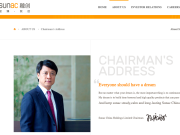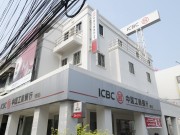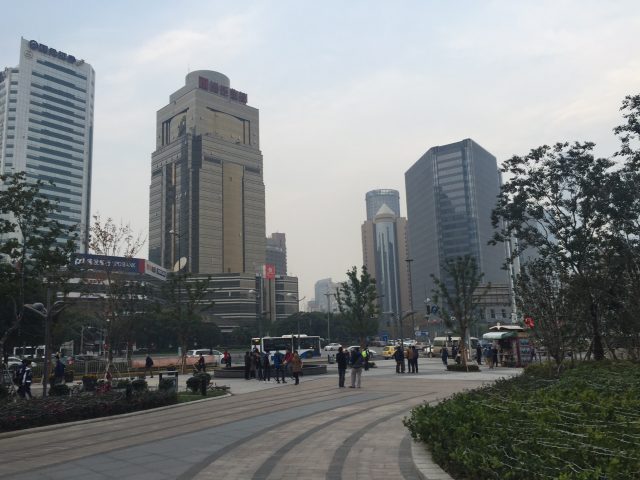BNY Mellon IM News & Views: Insight, Newton and Standish Views on China
BNY Mellon Investment Management (IM) | News & Views
Ahead of Chinese New Year, Rob Simpson from Insight Investment, Brendan Mulhern from Newton Investment Management, and Aninda Mitra from Standish Mellon Asset Management provide their views on what lies ahead for China.

Rob Simpson, Emerging Market Debt Portfolio Manager, Insight Investment
US president Donald Trump’s decision to withdraw from the Trans-Pacific Trade Partnership (TTP) in favour of one-on-one trade agreements could open up a significant avenue of influence for China in the years ahead as the remaining members turn to the world’s second largest economy in a bid to salvage the pact.
Leaders of the remaining nations have expressed a commitment to push ahead with the initiative in some form potentially paving the way for a new regional trade agreement for Asia focused around China. South East Asian economies are already shifting toward the Beijing-backed Regional Comprehensive Economic Partnership (RCEP), a step closer towards Asian regional integration.
The US’ stance on the TPP is being touted by some as a boon to the Chinese economy, but other considerations will be key to China’s economic success, including further trade policy announcements from Trump’s newly-assembled cabinet. While the focus has long been on economic stability, China’s hand might be forced in to playing defence on US policy and, as such, China’s priorities might increasingly be shaped by external factors.
Meanwhile, Chinese President Xi Jinping faces a domestic political agenda of his own as he prepares for a party leadership reshuffle later this year. Maintenance of economic stability heading in to this will be key.
Brendan Mulhern, Global Strategist, Newton Investment Management
As we enter the Chinese New Year, having been in a state of outright deflation in 2015, the Chinese authorities responded by ramping up fiscal stimulus, in large part through financial chicanery, to grow the debt on China’s balance sheet further. Last year was second only to 2009 in terms of the size of the debt increase. The economy stabilised and then accelerated throughout 2016 and the authorities once again hit the official target of +6.5% growth.
As we head into 2017, economic momentum generated by this dose of stimulus is likely to fade given the authorities have already begun to reduce policy support. The authorities are well aware of the risks that mounting leverage poses to the Chinese economy.
In April of last year, an unknown senior figure, widely held to be president Xi or one of his closest allies announced that the credit funded growth model could not go on. But go on it has. On some metrics, the Chinese credit bubble has now surpassed the bubbles of Japan, Ireland, Spain and the US; exalted company indeed. While the authorities articulate a preference for structural reform and a move away from credit funded demand, they remain constrained by the need to deliver jobs. With the 19th National Party Conference in the third quarter, this constraint will be no less restrictive; pacifying economic growth remains the order of the day for 2017. As such, it will not take much of a slowdown of the economy to prompt the authorities to prime the policy pumps once again. But how long can this go on?
China has continued to defy the bears, but there are signs that policymakers are facing an ever more difficult task keeping all the plates spinning, and signs of stress within the financial system are increasingly evident.
Aninda Mitra, Senior Sovereign Analyst, Standish Mellon Asset Management
China enters 2017 with tailwinds from policy stimulus undertaken in 2016. We think the cyclical momentum in GDP growth should be sustained through the first two quarters of 2017. But the monetary trilemma ‑ of targeting an ambitious growth rate, whilst wanting desirably low interest rates, and also not giving up control over the exchange rate ‑ is well and alive.
The authorities are unlikely to budge on deeper policy or structural reforms until after the upcoming Communist Party Congress in November this year. Basically, there is little tolerance for much macro or policy volatility in the run up to the biggest internal political re-arrangement in years – especially, when President Xi Jinping is consolidating his hold on power and as China’s geo-strategic objectives are becoming more ambitious.
At Standish, we believe the Chinese authorities have the requisite FX reserves and the requisite policy and administrative tools – including capital controls – for maintaining macro stability for the foreseeable future, and thereby delivering a reasonably conducive environment for USD credit performance. But as foreign reserves dwindle and domestic leverage continues rising, the exchange rate will ultimately have to bear much of the strain of a needed macroeconomic adjustment – especially, amid delays in deeper structural reforms. The main tail-risk to an otherwise stable near-term macro outlook arises from the outbreak of trade-protectionism directed specifically at China by the incoming Trump-presidency.
 About BNY Mellon Investment Management (IM)
About BNY Mellon Investment Management (IM)
BNY Mellon Investment Management (IM) is the world’s largest multi-boutique asset manager, with US$1.6 trillion under management. We have a breadth of investment experts and spokespeople across every major asset class.
Sign Up / Register
Caproasia Users
- Manage $20 million to $3 billion of assets
- Invest $3 million to $300 million
- Advise institutions, billionaires, UHNWs & HNWs
Caproasia Platforms | 11,000 Investors & Advisors
- Caproasia.com
- Caproasia Access
- Caproasia Events
- The Financial Centre | Find Services
- Membership
- Family Office Circle
- Professional Investor Circle
- Investor Relations Network
Monthly Roundtable & Networking
Family Office Programs
The 2025 Investment Day
- March - Hong Kong
- March - Singapore
- July - Hong Kong
- July - Singapore
- Sept- Hong Kong
- Sept - Singapore
- Oct- Hong Kong
- Nov - Singapore
- Visit: The Investment Day | Register: Click here
Caproasia Summits
- The Institutional Investor Summit
- The Investment / Alternatives Summit
- The Private Wealth Summit
- The Family Office Summit
- The CEO & Entrepreneur Summit
- The Capital Markets Summit
- The ESG / Sustainable Investment Summit


































